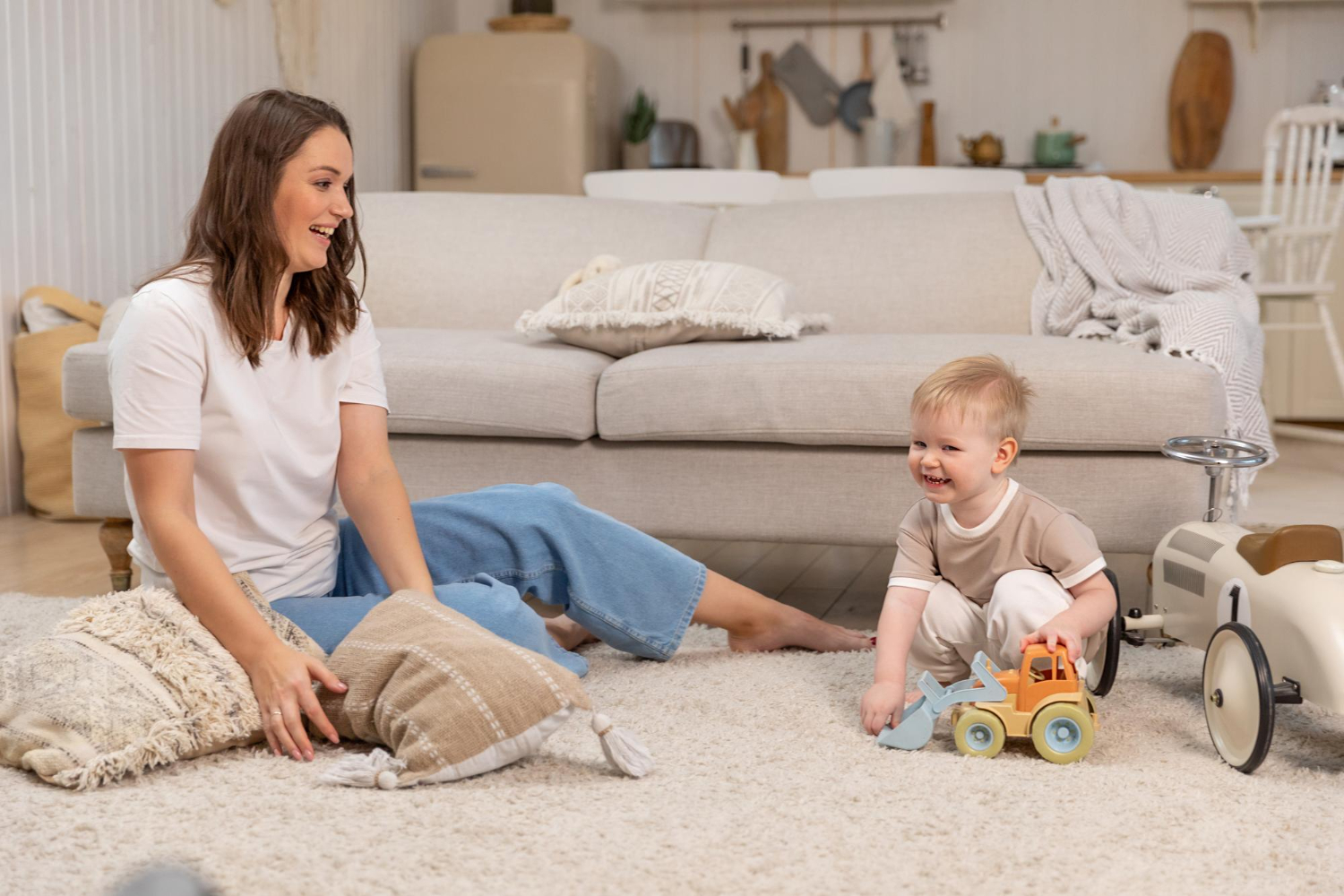Kids room rugs are an essential element for creating a cozy and inviting space. They not only add color and style to a child’s bedroom or playroom, but also provide a soft surface for playtime, helping to ensure comfort and safety. With a variety of designs, textures, and sizes available, parents have many options to suit their child’s personality and interests.
From whimsical patterns to educational themes, the right rug can enhance a child’s environment in countless ways. Brands like IKEA and Amazon offer a large selection, featuring easy-care and durable materials that can withstand the wear and tear of daily use. Choosing a rug that is both functional and visually appealing contributes greatly to a child’s enjoyment of their space.
In addition to aesthetics, kids rugs are often designed with safety in mind. Features like stain resistance and sound dampening can make a big difference in busy households. Parents can find rugs that not only look good but also serve practical purposes, ensuring a perfect fit for any kids’ room.
Why Kids Room Rugs Are Essential
Kids room rugs serve multiple purposes, from ensuring safety and comfort to fostering creativity and educational activities. They provide a cozy space that kids can enjoy while enhancing their overall experience in their rooms.
Safety and Comfort
Rugs play a crucial role in creating a safe environment for children. They provide a soft surface that cushions falls, reducing the risk of injury during play.
When kids tumble or slip, having a rug underneath can help absorb some impact, making it safer for them to explore their space.
Many rugs designed for children’s rooms are machine washable, ensuring a clean surface where kids can play safely. Furthermore, rugs can add warmth to a room, making it a more inviting and comfortable area for relaxation.
Educational Value
Rugs are not just decorative; they can also contribute to a child’s learning experience. Certain rugs feature educational themes, such as numbers, letters, or maps.
These designs encourage interaction and help kids learn while they play.
For example, a rug with a number grid can aid in learning counting and basic math. Additionally, having a designated area for activities promotes a sense of organization, making it easier for children to focus on tasks.
This merging of functionality and fun enhances their educational journey.
Creative Play Enhancement
Kid’s room rugs provide a perfect setting for imaginative play. A well-chosen rug can define a play area, making it easy for children to understand where they can engage in different activities.
For instance, a colorful rug can spark creativity, inspiring games, storytelling, and interaction among peers.
Soft textures invite children to sit and play comfortably, enhancing their overall engagement. Having a dedicated space for creativity can boost a child’s confidence and social skills as they use the area to collaborate with friends.
Quality rugs also add a touch of style to the room, making it a space that reflects the child’s personality.
Choosing the Right Size
Selecting the right rug size for a child’s room is essential for both functionality and style. The rug should fit comfortably within the room’s dimensions and complement the furniture layout. This ensures a cohesive look while providing a comfortable play area.
Room Dimensions
Understanding the room’s size is the first step in choosing the right rug. For small rooms (up to 10×10 feet), renters or homeowners might opt for rugs sized 4×6 or 5×8 feet. Medium rooms (up to 12×12 feet) can benefit from 6×9 or 8×10 feet rugs.
For larger spaces (over 12×12 feet), 9×12 feet rugs or larger are ideal.
Quick Reference Table:
| Room Size | Recommended Rug Size |
|---|---|
| Small (up to 10×10 ft) | 4×6 or 5×8 ft |
| Medium (up to 12×12 ft) | 6×9 or 8×10 ft |
| Large (over 12×12 ft) | 9×12 ft or larger |
Proper sizing helps to create balance in the room. It also avoids the appearance of a cramped space or one that feels too empty.
Furniture Layout
Furniture placement plays a big role in rug size selection. It is best to place the rug under the bottom two-thirds of the bed. This allows for a smoother visual transition from the bed to the rug.
In a play area, the rug should be large enough to accommodate toys and seating. A good rule is to ensure it extends beyond the play table and chairs. This makes it easier for kids to play without being restricted.
Placement Tips:
- Under the Bed: Aim for rugs that fit beneath most of the bed.
- Play Areas: Ensure rugs are large enough to fit toys and seating comfortably.
These principles help the rug become a part of the furnishings and contribute to a welcoming atmosphere.
Materials and Durability
Choosing the right rug for a child’s room involves considering materials and their durability. Different fibers offer various benefits, including comfort, safety, and ease of cleaning.
Natural vs Synthetic Fibers
Natural fibers such as wool, cotton, and jute are popular choices. They are soft, hypoallergenic, and offer breathability. Wool is highly durable, while cotton is easy to clean and gentle on the skin.
Synthetic fibers like polyester and nylon are also common. They tend to be stain-resistant and more affordable. Polyester rugs can withstand fading and are ideal for bright, sunny rooms.
Comparison Table:
| Material | Durability | Stain Resistance | Hypoallergenic |
|---|---|---|---|
| Wool | High | Moderate | Yes |
| Cotton | Moderate | Low | Yes |
| Polyester | High | High | No |
| Jute | Medium | Low | Yes |
Ease of Cleaning
Cleaning is essential for maintaining a child’s rug. Natural fibers like cotton are machine washable, making them convenient for busy parents.
Wool requires special care, usually needing professional cleaning. Synthetic rugs like polyester can be cleaned easily with water and mild detergent.
For spot cleaning, parents should act quickly to prevent stains. Using a vacuum regularly helps maintain the rug’s appearance. Choosing a rug that fits a busy lifestyle ensures cleanliness and durability.
Safety Considerations
When choosing rugs for children’s rooms, safety is a key factor. Parents should focus on the rug’s backing and materials to ensure a safe play environment. Two important aspects to consider are non-slip backing and low VOC materials, each contributing to the overall safety of the space.
Non-Slip Backing
A non-slip backing is essential for preventing slips and falls. Rugs can easily slide on hard floors, leading to accidents. Many manufacturers now offer rugs with specialized rubber or vinyl backings to help keep them in place.
Benefits of Non-Slip Backing:
- Stability: Rugs stay put during play.
- Increased Safety: Reduces the risk of falls.
- Durability: Enhanced lifespan due to less movement.
Before purchasing, check for certifications or labels that indicate the rug has non-slip features. Some options also include adhesive backings that can provide an extra layer of safety.
Low VOC Materials
Low VOC (volatile organic compounds) materials are important for children’s health. High levels of VOCs can emit toxic fumes that affect air quality. This can be particularly harmful in enclosed spaces, such as bedrooms.
Why Choose Low VOC Rugs:
- Healthier Environment: Reduces allergic reactions and respiratory issues.
- Sustainable Choices: Often made from natural or recycled fibers.
- Quality Standards: Look for certifications like ISO 9001 and others that ensure safety and low emissions.
When shopping for rugs, always inquire about the materials used and opt for those labeled as low VOC to create a safer space for children.
Design and Aesthetics
When choosing rugs for kids’ rooms, design and aesthetics play a vital role. The right rug can enhance the overall look of a space while adding comfort and safety. Key aspects to consider include color schemes, themes, and the texture of the rug.
Color Schemes
Color schemes should reflect the room’s style and the child’s personality. Soft pastels create a calming atmosphere, while bright colors can energize the space. Combinations of complementary colors may help create a playful and engaging environment.
For example:
- Pastels: Light pinks, blues, and yellows promote a serene vibe.
- Bold shades: Red, orange, and teal can stimulate creativity and play.
Choosing a rug that features multiple colors can tie together different elements in the room, making decoration easier and more cohesive.
Thematic Rugs
Thematic rugs are a fun way to express personal interests. They can feature popular characters, animals, or educational themes, which can encourage imaginative play.
Some popular themes include:
- Animal designs: Cute creatures bring a sense of adventure.
- Educational motifs: Maps or alphabets promote learning.
These rugs can also serve as a focal point in the design, guiding the color scheme or overall decor style used in the rest of the room.
Texture and Patterns
The texture of a rug adds dimension and comfort. Soft, plush materials are inviting and make playtime more enjoyable. On the other hand, flat-weave rugs are durable and easy to clean, ideal for high-traffic areas.
Patterns also influence the room’s aesthetics. Stripes, polka dots, and geometric prints can make a bold statement. Here are some considerations:
- Stripes: They can elongate or widen a space visually.
- Floral or whimsical designs: These can make the room feel softer and more welcoming.
Selecting the right texture and pattern can significantly affect the room’s mood and functionality, helping to create an ideal environment for children.
Interactive Rug Features
Interactive rugs offer unique ways for children to learn and play. They combine fun designs with educational elements that enhance a child’s room. These rugs often come in various themes, providing opportunities for creativity and engagement.
Play Mats With Roads
Play mats featuring roads are popular among young children. These mats are designed to stimulate imaginative play. They usually include roads, intersections, and landmarks, creating a miniature town.
Children can use toy cars and figures on these mats, encouraging role-playing and storytelling. The mats are often colorful and made from soft materials, ensuring comfort during playtime. Easy to clean, they are suitable for messy activities as well.
Choosing a road play mat can enhance motor skills and spatial awareness. They provide a great way for kids to develop their creativity while enjoying quiet or active play.
Educational Rugs
Educational rugs come with designs that promote learning in fun ways. These rugs can feature letters, numbers, or shapes that encourage early childhood education.
For instance, an alphabet rug allows kids to learn letters while playing. Similarly, rugs with number patterns can help with basic math concepts. Many of these rugs are bright and visually appealing, capturing a child’s interest.
Materials used are often soft and non-toxic, making them safe for young children. They also provide a comfortable space for sitting or playing. Educational rugs not only decorate a room but also serve as valuable tools for learning and development.
Sourcing and Sustainability
Sourcing kids’ room rugs with a focus on sustainability is essential for creating a healthy environment. Many manufacturers are committed to using eco-friendly materials and ethical production methods.
Eco-Friendly Options
When choosing rugs, parents can find a variety of eco-friendly options that prioritize safety and environmental impact. Popular materials include:
- Organic Cotton: Grown without pesticides, organic cotton is soft and safe for children.
- Bamboo: As a renewable resource, bamboo rugs are durable and biodegradable.
- Recycled Fibers: Rugs made from recycled plastic help reduce waste and keep the material out of landfills.
Many brands offer machine-washable rugs, which enables easy cleaning without harmful chemicals. Options like Lorena Canals’ Natural Cotton Terrazzo Rug feature toxic-free dyes and a mix of natural and recycled fibers, making them a great choice for eco-conscious families.
Ethical Production Practices
It is crucial to support brands that prioritize ethical production practices. This includes:
- Fair Labor: Brands should ensure workers receive fair wages and safe working conditions.
- Handmade Techniques: Many sustainable rugs are handmade by artisans, supporting local communities and preserving traditional skills.
- Transparency: Brands with clear sourcing policies allow consumers to understand where materials come from and the impact of their choices.
When selecting a rug, parents should look for certifications that indicate adherence to sustainable practices. This commitment not only benefits the environment but also ensures a safe space for children to play and grow.
Budget and Pricing
When choosing rugs for kids’ rooms, budget plays a vital role. There are options for every price range, from affordable choices to higher-end investments. Understanding these can help in making the right decision.
Affordable Choices
Affordable rugs can be found in various styles and materials. Prices typically range from $20 to $50, making them accessible for most budgets. Retailers like Amazon offer numerous options, including washable and non-slip designs. For example, a modern ombre rug can be purchased for around $23, while fluffy shag rugs vary from $22.99 for smaller sizes.
Many affordable rugs are made from durable materials like polypropylene. This fabric is easy to clean and suitable for high traffic areas, which is essential for kids’ spaces. The key is to find bright colors or fun patterns that appeal to children while staying within budget.
Investment Pieces
For those looking to invest in high-quality rugs, prices can range from $100 to $300. These rugs often feature unique designs and higher-grade materials. Investment pieces can add a touch of elegance to a child’s room and may last longer.
Brands like Kroma Carpets offer decorative options such as faux sheepskin rugs priced around $35 to $70. These rugs not only enhance aesthetics but also provide comfort. Parents should consider the long-term value of these rugs.
Choosing to invest now can save money in the long run, as they typically require less frequent replacement.



